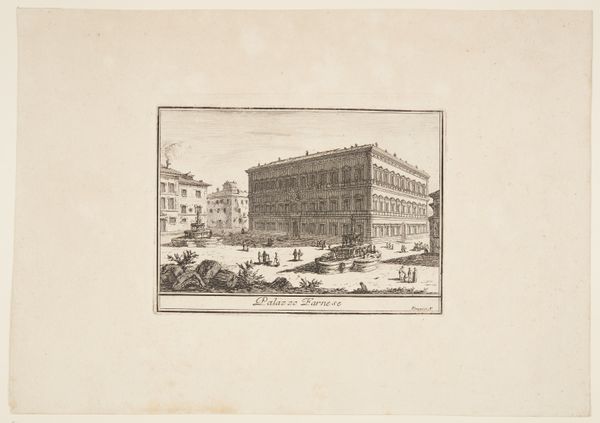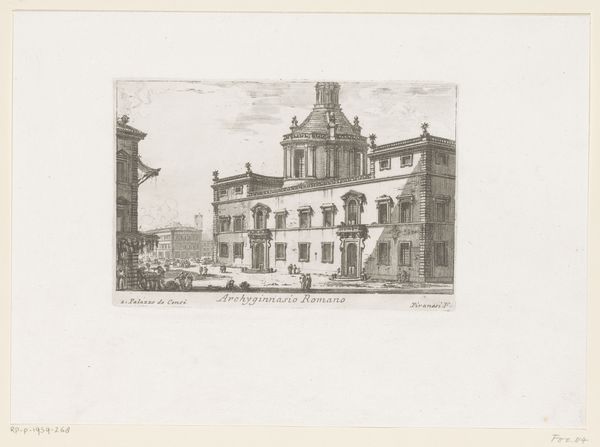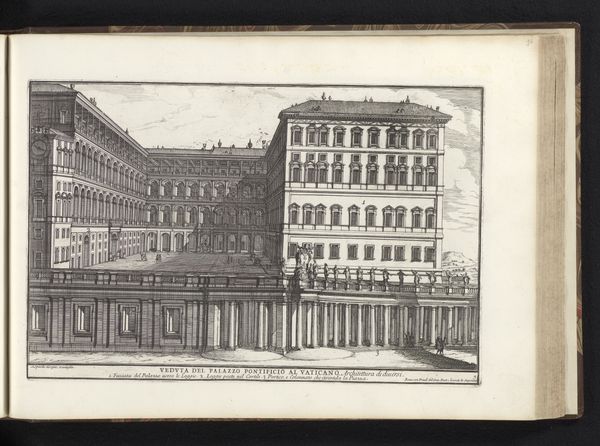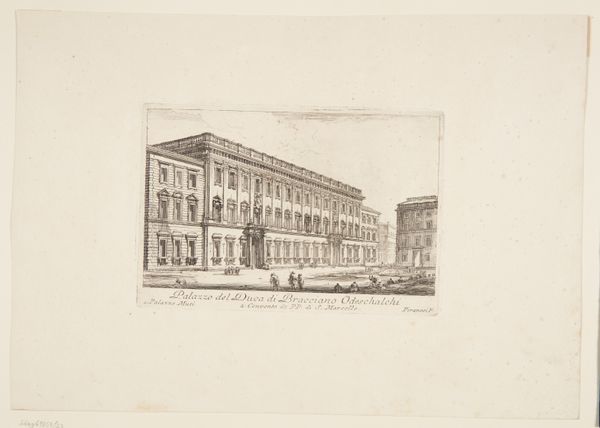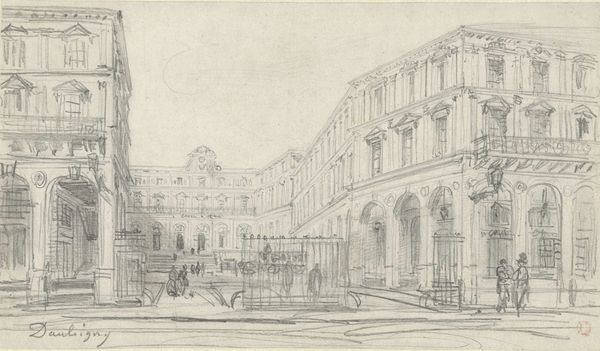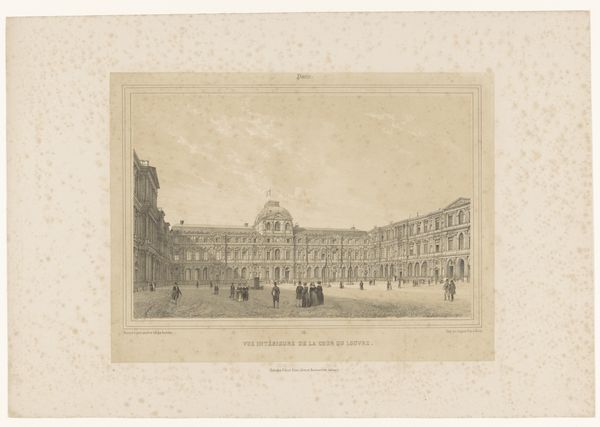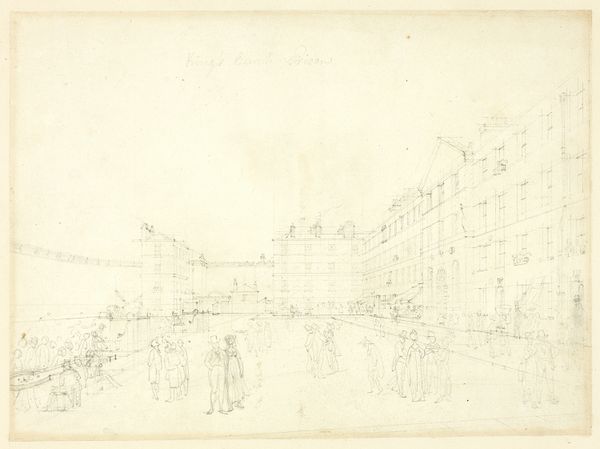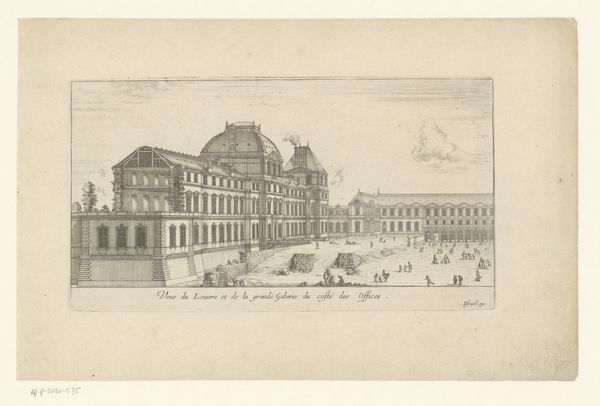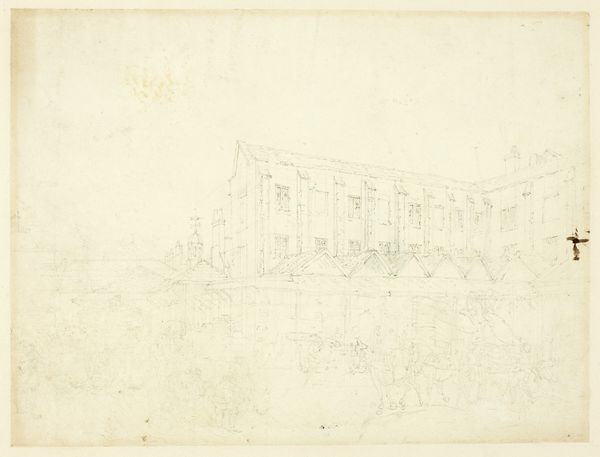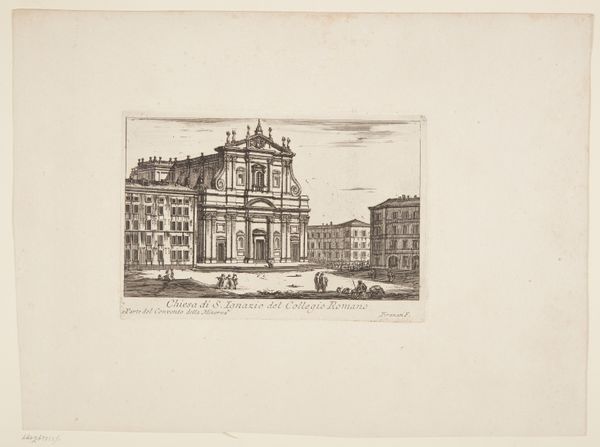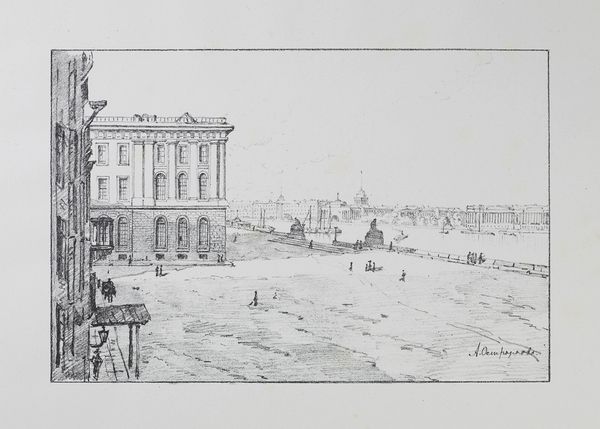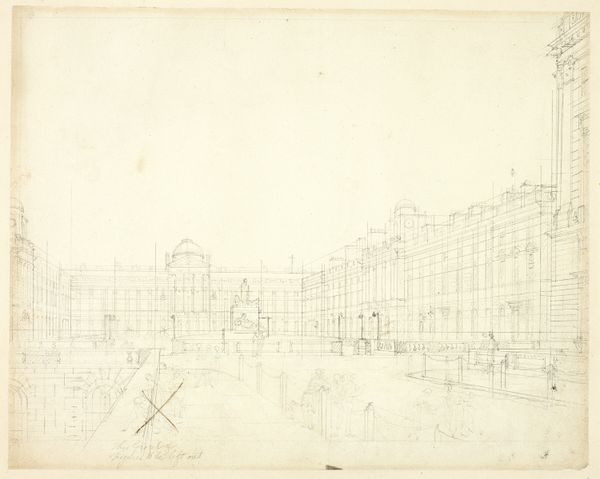
drawing, print, etching, architecture
#
architectural sketch
#
tree
#
drawing
#
baroque
# print
#
pen sketch
#
etching
#
etching
#
cityscape
#
street
#
architecture
#
building
Dimensions: 8-7/8 x 11-1/2 in. (22.5 x 29.2 cm)
Copyright: Public Domain
Curator: Here we have an etching titled "View of the Borsa, Rome," created sometime between 1700 and 1800 by an anonymous artist. Editor: It’s airy, precise… and somehow unfinished, isn’t it? Like a beautifully detailed architectural rendering still awaiting the architect's final seal. The texture of the paper seems almost as important as the lines. Curator: Absolutely. It has that ephemeral quality often seen in preparatory sketches, and this piece functions partly as a cityscape. We're presented with the Borsa, a key center for commerce, depicted with its full Baroque flourish. Editor: I'm immediately drawn to the implied labor in the foreground. Tiny figures unloading goods, suggesting the constant activity and human effort required to sustain this kind of monumental architecture. What was the process, do you imagine? Curator: I'd say the architecture becomes symbolic of Roman power and wealth. The meticulous etching captures the ornate details favored by Baroque aesthetics. The grid-like structure underneath, likely a preliminary guide, feels so nakedly exposed. It is, for me, a diagram of ideal form, made transparent. Editor: The labor feels linked so integrally to the commerce occurring inside those ornate walls. Think of the artisanal labor, the making of paper, the grinding of inks for this print itself! It encourages me to see beyond just the "grand view". How this image was reproduced would reach new markets. Curator: It highlights a transition in knowledge. Cityscapes offered an aesthetic experience, a cultural education for the travelers but served also as political tools to disseminate Rome’s influence through accessible visual formats. It’s a memento and a subtle form of propaganda all rolled into one. Editor: Yes, propaganda, maybe…But what's compelling is also how the process humanizes the scene, those underlying grids and visible working marks really challenge the finished product. It's an interesting contrast to Baroque’s typical opulence and overt perfection. Curator: The anonymity of the artist makes it a particularly compelling artifact. The symbols are the signatures. This etching prompts reflection on power, commerce, artistic creation, and the hands, both visible and invisible, that shaped them. Editor: It certainly gives you a lot to consider, from grand urban planning down to the everyday economy of mark making.
Comments
No comments
Be the first to comment and join the conversation on the ultimate creative platform.
